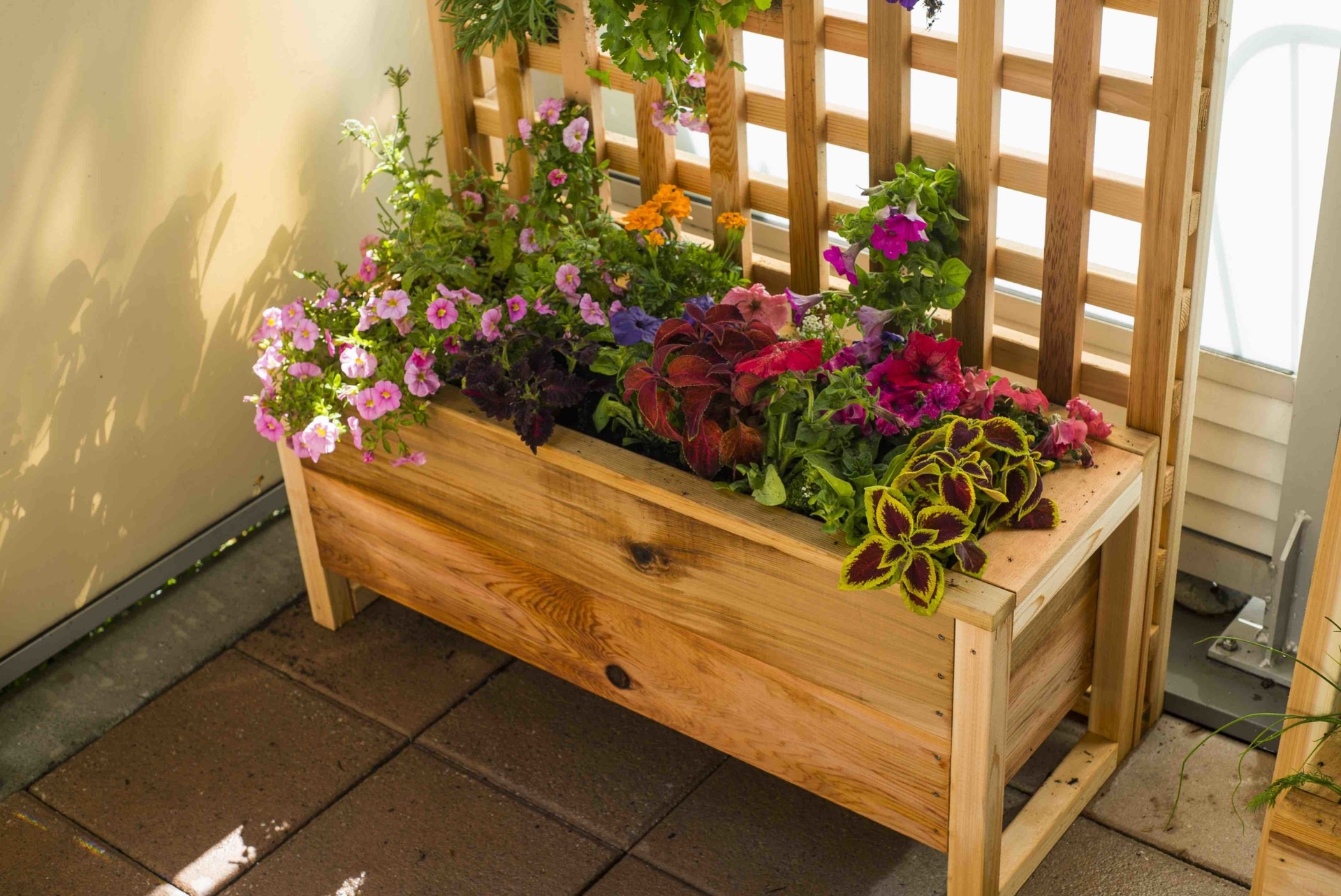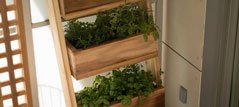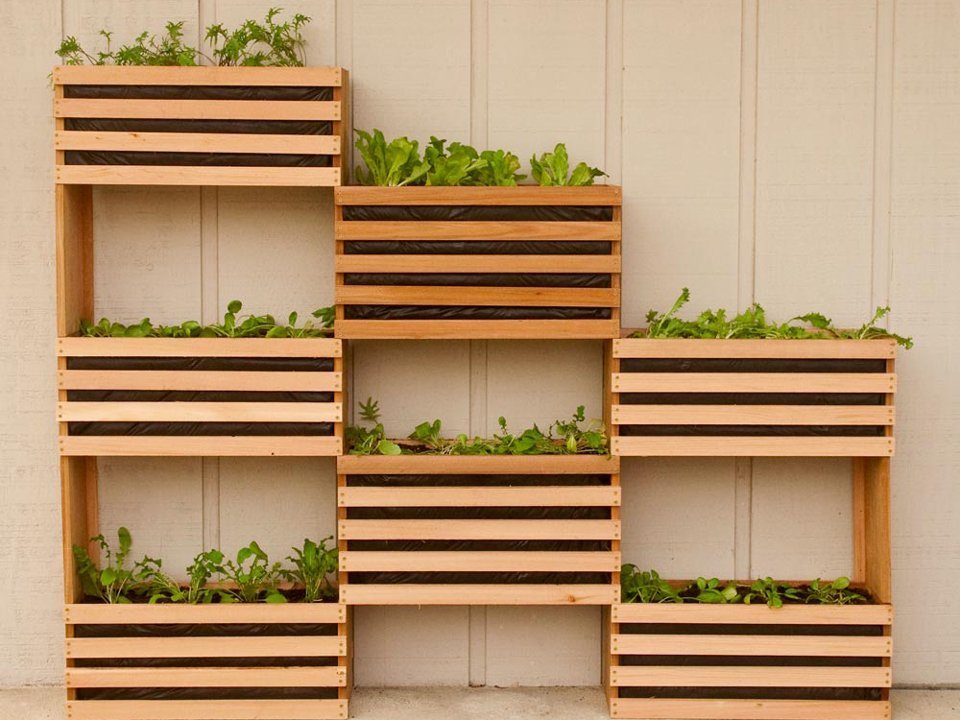Back
Back
Back
Back
Back
Back
Back
Back
Back
Back
USA & Canada
Creative Ways to take your raised bed and planter gardening to new heights

Sign up now for our DIY Project Newsletter
Generations of space-challenged gardeners have relied on raised beds and planter boxes to grow a harvest of vegetables, fruits and herbs — even in the tightest spaces. Vertical gardening gave us a whole new way to garden in tight spots, by encouraging plants to grow up, rather than spread out. Now, by marrying the two techniques, you can create a visually stunning, artistic display of gardening prowess that will keep your table full of fresh produce throughout the summer.
Building the foundation
A well-built, durable planting foundation, such as a raised bed or planter box made from Western Red Cedar, is an essential starting point. Decide where yours will go and start building. You can find free project plans online to help you build the frame for a raised bed or a planter box.
Whatever style of planter you build, it’s important to choose a quality construction material. Western Red Cedar is often the choice of savvy gardeners because it’s naturally rot resistant and easy to work with. It needs no chemical finishes or paints to preserve or beautify it, and is harvested from sustainably managed forests. Learn more and find free project plans at Realcedar.com.
Simple steps onward and upward
 With a good foundation in place, it’s time to consider all the ways you can turn your raised bed or planter into a vertical masterpiece.
With a good foundation in place, it’s time to consider all the ways you can turn your raised bed or planter into a vertical masterpiece.
Adding a simple trellis to your raised bed or planter box is an easy way to maximize your growing space. For example, you can plant shrub-type plants like peppers in a row in the front portion of the planter, then add a trellis in the back portion and encourage vining veggies like beans, peas and cucumbers to grow up the structure.
But you don’t have to be limited to fruits and veggies that grow on vines. You can affix small boxes or even burlap bags to your structure and plant individual plants in each one, allowing for greater variety in your vertical garden.
Loftier ambitions

Courtesy of Chris Gardner of ManMadeDIY.com
Is your raised bed nestled against a wall? Or perhaps your planter box perches on one side of your backyard deck. You can add a free-standing wall by building a cedar frame and stretching hex wire across the frame. Vines will readily climb the wire, but you can also attach terra cotta pots to the wire to hold herbs, small vegetables and even flowers.
In a variation on the trellis concept, you can build a framework with multiple rows of narrow cedar troughs above your raised bed or planter box; the troughs make a great growing spot for herbs. You can also create a stepped planter by building a series of boxes in graduated sizes and then stacking them atop each other widest to narrowest. Or, for a more modern look, build a contemporary ladder-style vertical garden with box-shaped removable planters.
Veteran gardeners who are also seasoned do-it-yourselfers can go all out by building a pergola. Western Red Cedar pergolas can go anywhere, take up far less ground space than a traditional garden and are wonderful vertical gardening pieces. Just plant your favorite vining fruit or vegetable at the base of each post and train the vines upward as they grow.
One out of every three American households gardens — 36 million households — according to the National Gardening Association. With 9 million households in urban area participating in gardening, it’s a great time to explore creative ways to bring vertical gardening and raised beds or planter boxes together.
Watch these two new how-to videos and get inspired to build your own Real Cedar vertical garden:
© 2025 All rights reserved
Gatsby Website Development by Jambaree
